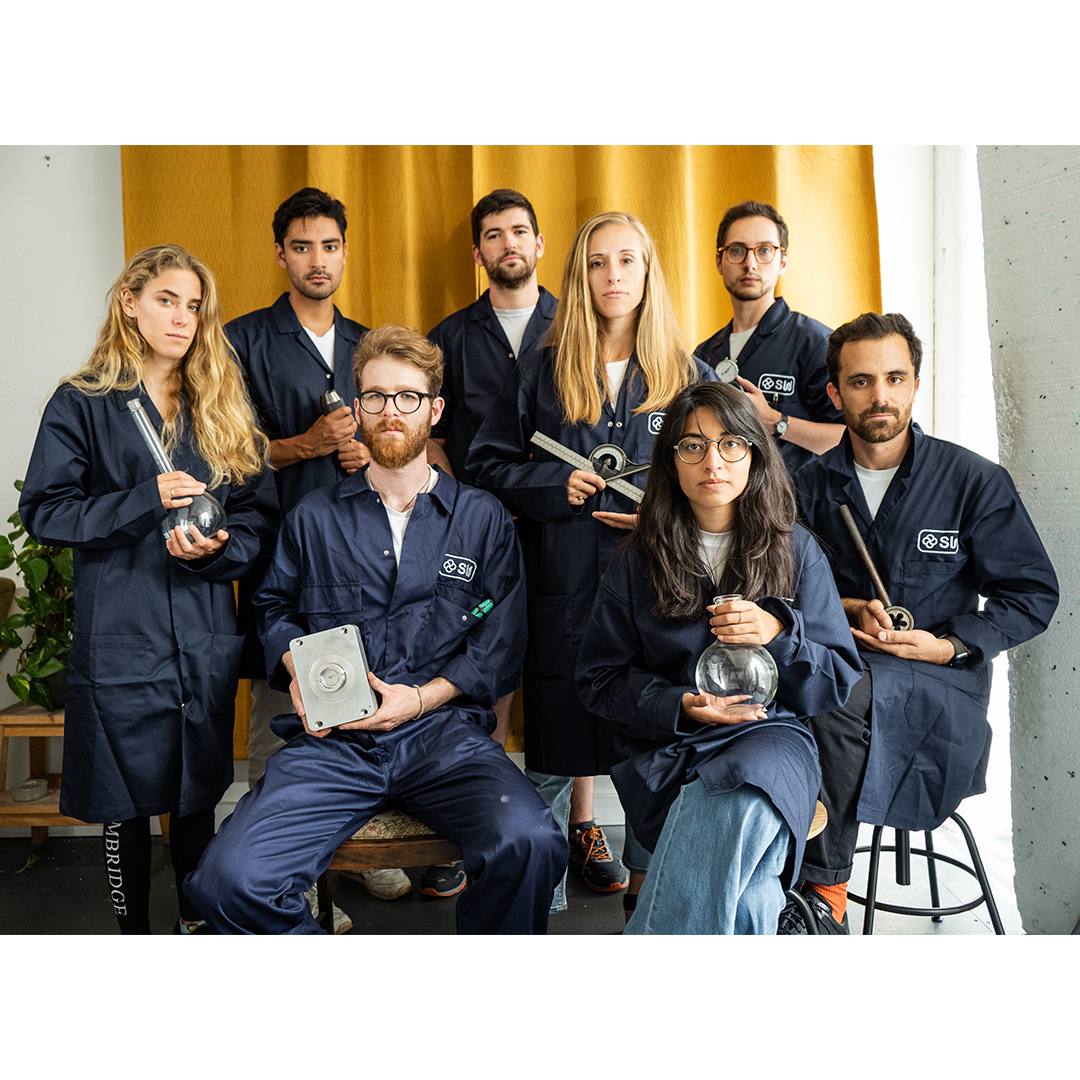»We like to think of nature as the ultimate biologist, the ultimate chemist.«
Interview with Shellworks
Shellworks is a London-based startup and interdisciplinary team of scientists, engineers, and designers founded in 2019. Their work focuses on finding alternative solutions to plastic by working with nature. The curators of the upcoming exhibition »Plastic: Remaking Our World« spoke with Amir Afshar, one of three founding members, about the startup’s work process, philosophy, and recent relaunch.
Charlotte Hale and Mea Hoffmann: Could you tell us about what Shellworks does, what materials and processes you use, and why?
Amir Afshar: The three of us that founded Shellworks met at the Royal College of Art and Imperial College doing a dual master’s called Innovation and Design Engineering, and we were fascinated by the problem of plastic pollution. Coming from three distinct backgrounds – science, engineering, and design – we thought we could bring these things together and find a solution. From there, we created what we call truly compostable alternatives to plastic materials that are designed to degrade in any environment without the need of special conditions like industrial composting or high humidity and temperature. So why not leverage what nature has built over millennia and try to understand how we can use it to create materials for today that will last only the duration they are needed? We started by creating materials using a biopolymer called chitin that we extracted from crustacean shells, a waste product of seafood farming. We then got a lot of industry feedback concerning vegan solutions. And this is something that we didn’t really think about, because when you think about plastic, you don’t really think about it being vegan or not! Now we use a microbe-based fermentation process, where the microbes feed on a carb source, for example sugar or food waste, and produce a plastic-like material in their cells – just as we produce fat in our bodies. And once we take that material out, it behaves like plastic. So it felt like it was nature saying, »Here’s an option that I’m okay with.« The beauty of it is that the same microbes will then break it down and they’re abundant within marine and soil environments. So once it’s disposed of, it will break down and act in a benign way leaving no microplastics behind.
Was supply another factor in changing from chitin to microbes?
Chitin is the second most abundant biopolymer on Earth after cellulose, so it’s available in the short term. But when you scale up to meet the challenges of plastic, other industries have to keep up with you. We didn’t want to promote unsustainable farming just to extract chitin. It’s a very interesting material, but you can scale up more rapidly when working with microbes.
Do your products aim to replicate plastic or embrace their natural quality?
We like to think of nature as the ultimate biologist, the ultimate chemist. The way that you find things in nature is so complex and beautiful and so perfectly arranged that it’s difficult to replicate, so why not work with nature. Our microbially derived alternatives to plastics have great barrier properties. They’re water resistant and oil resistant, and they’re easily formed with current manufacturing processes. We try to create things that might manufacture like plastic but don’t necessarily feel like plastic. We work really hard on the surface texture, for example, or the depth of the material. We only use natural dyes, so we like the fact that sometimes there’s non-uniformity. It makes you understand that, yes, it’s one of 5,000 pieces, but somehow there’s a beauty to that one piece, inherently separate to its collection. I think those kind of actions build value into things. But it’s definitely something that we question all the time.
How far along are you with this process in terms of developing products?
We’re already shipping products to a couple of different companies in the beauty space, but when people think of single-use plastics, they usually think of food packaging. People don’t really focus on beauty products, because they’re used for a longer period of time. The issue within the beauty industry – like with lipstick holders, one of the things that we have now developed – is that they’re conventionally made up of around four or five different types of plastic that all tuck inside each other, which pretty much makes it impossible to recycle them even with the best intentions. Our solutions in contrast to this are all mono-material.
How do you feel about the future of plastics?
We are very positive. We don’t want people to feel guilty about the way that we’ve dealt with plastics. It’s been an available material. In theory, it’s a great material – it’s been too good, so we’ve used it for everything. But now, there must be a better way to do things. Let’s embrace it and work together collaboratively to try to find a solution which is ultimately going to be useful to everyone.
You can find all information on the exhibition »Plastik: Remaking Our World« here.

